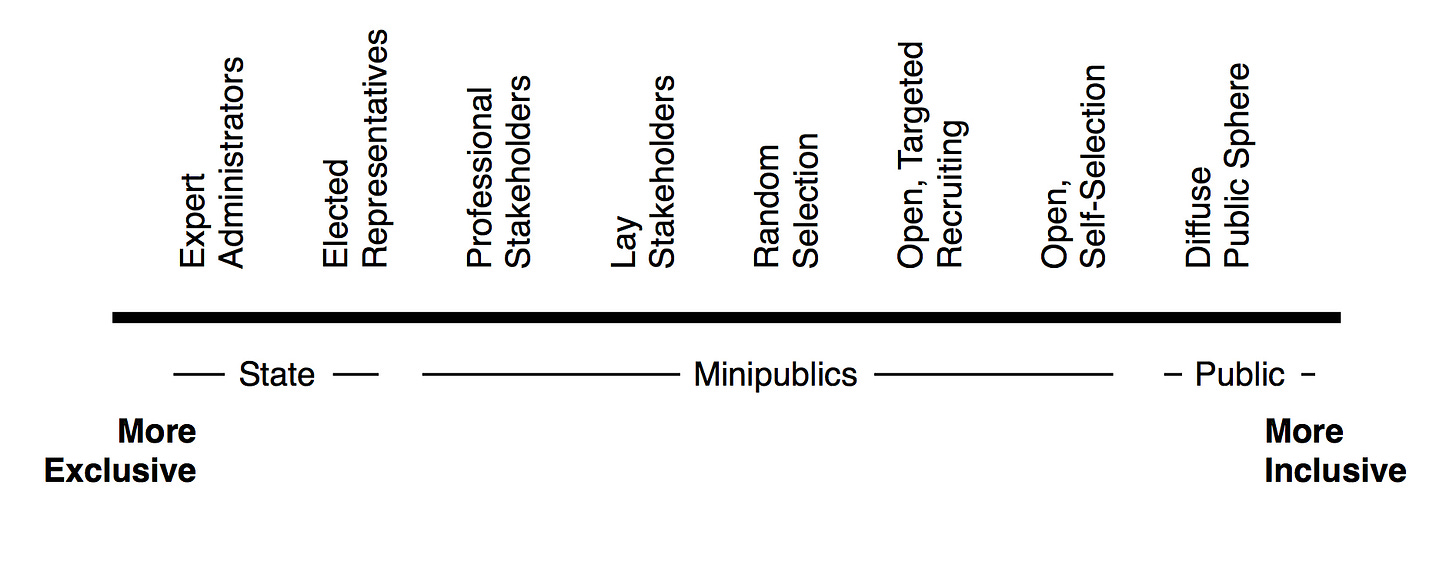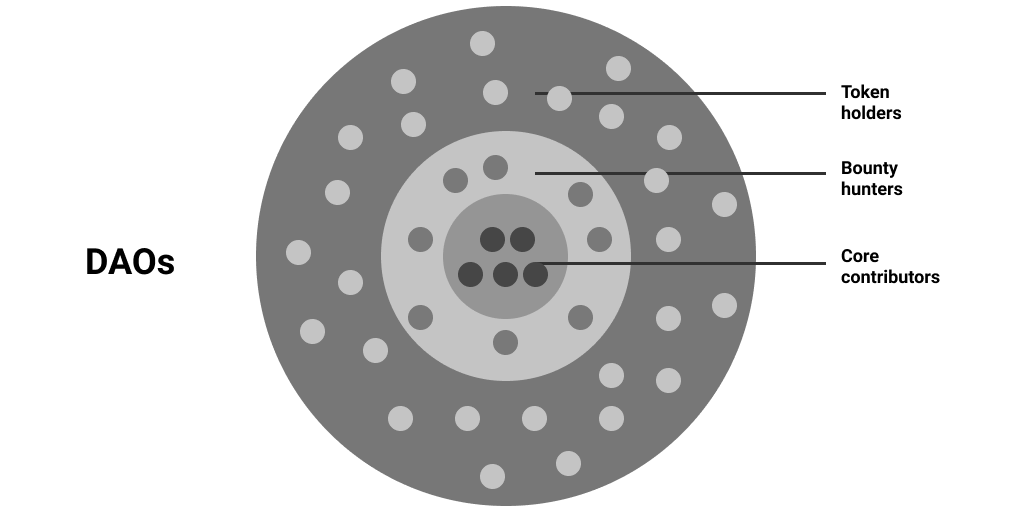Lately, more and more of my friends are joining DAOs. Some are passive members, others are active contributors. I assume a lot of this is due to DAOs being the thing de jour right now in the industry. Nonetheless, it’s been an interesting trend to observe.
Watching this unfold triggered a thought - are DAOs companies, communities, or both? It’s an interesting question.
I started writing this issue a few weeks ago, hit a wall, and set it down. Sometimes you just don’t have enough pieces to put something coherent together. I picked it back up this week after seeing a few tweets and diagrams that sparked some new thoughts.
Let’s zoom in…
Company or Community?
To highlight the difference between company and community, let’s compare a tech company and New York City.
The tech company operates a business with a very specific value proposition. The business has a target audience it solves a problem for. The business employs a group of people to deliver that value and hopefully grow the business.
New York City, on the other hand, provides a broad set of things to the people that live there. Basic necessities like water and electricity, housing, schools, food and job opportunities. A community’s target audience is the community.
The purpose of a business is to serve a customer. The purpose of a community is to serve its members.
Now let’s look at another example, this one involving a DAO…
Imagine a new company builds and launches a DeFi protocol (the business). In this instance, the protocol is the product/service managed by the company. Two years later, the company launches a token and transitions control of the protocol over to a DAO. The product/service (protocol) stayed the same, but governance of the business changed.
This simple example highlights that DAOs, like a company, can operate a business.
Company + product/service = business
DAO + product/service = business
DAOs were granted LLC status in Wyoming earlier this year, protecting it’s members from general partnership liability and allowing them to maintain ownership rights. So maybe DAOs are more like companies? Too early to tell. Let’s keep going…
Community Participation
Communities were an interesting topic to dive into. I’ve been part of communities my entire life - neighborhoods, school, church, sports…and now crypto. But if I’m honest, I had never thought about the spectrum of community participation until writing this issue.
Communities are by nature inclusive. Some are even permissionless. You are part of a community simply based on where you live, or where you went to school. It’s a revolving door too; new people coming and going all the time. On the other hand, holding any power or authority in a community is exclusive, and oftentimes requires getting elected, appointed or hired to a formal position.
I went digging for something that visually represented the spectrum of participation in our communities today and stumbled across Archon Fung’s Varieties of Participation model, which describes the most common forms of public participation in local democratic governance.
Here it is…
I won’t define each one, but I wanted to discuss a few, going backwards from right to left.
Public Sphere is the lowest barrier to entry, but also comes with the least amount of influence. An example of this is attending a public protest.
Lay Stakeholders are individuals that aren’t paid but participate because they have a deep interest in some public concern.
Professional Stakeholders, unlike Lay Stakeholders, are paid to be involved in governance, such as lobbyists, consultants, campaign directors, or union representatives.
Elected Representatives is limited to people who hold elected office, meaning they must have run a successful election campaign.
The most exclusive, Expert Administrators, are people who manage government agencies or institutions. What they do often requires certain credentials and experience.
Most people in our communities are somewhere between Public Sphere and Lay Stakeholders. Only a small minority are working in or for the community full time.
I thought Fung’s model did a great job of articulating the different ways people participate in our communities. Some are active, some are passive. Some make a career out of it!
Let’s compare Fung’s model with DAO participation today…
DAO Participation
Like participation in our local communities, DAO participation is a spectrum. Some people are involved full time, others are passive.
I was in the middle of creating a spectrum of participation diagram for DAOs when I stumbled across this simple graphic from @flynnjamm which does a great job of articulating the different ways people can be involved in a DAO.
Let’s look at each category of participation going from most inclusive to most exclusive.
Tokenholders is the most inclusive category of participation. Other than holding the DAO’s token, the individual can remain entirely passive. Being a passive tokenholder in a DAO is equivalent to being a passive homeowner in a local community. You are making a financial investment in the community, but you aren’t spending time building or improving it.
Bounty Hunters describes the class of contributors that perform ad hoc tasks for the DAO in exchange for compensation. These are often in the form of grants, awarded after a public RFP and proposal process. Grant recipients can go from DAO to DAO selling their services, especially if they are specialized in a particular area (i.e. treasury management).
Core contributors are the equivalent of the elected representatives and expert administrators in our local communities - individuals who work full time for the DAO, and are almost always founding members or people that have been long term contributors with an established reputation (just like local politicians!).
Comparing the two diagrams convinced me the way individuals participate in DAOs today is identical to the way they participate (or not) in their local communities.
So…company or community?
Here’s my scorecard…
Like a company,
DAOs can operate a business
DAOs can have owners
DAOs can serve customers
Like a community,
DAOs have a wide spectrum of participation
DAOs can serve the DAO members
The first takeaway here is DAOs are a mechanism for organizing a group of individuals for a particular purpose. That purpose may be commercial, civic, social, philanthropic, or other.
The second takeaway is the same technology mechanisms allow you to operate all of the above. Smart contracts and tokens will be the default structure for any group-coordinated effort online, especially if the participants don’t trust each other.
The third takeaway is decentralized projects, especially public blockchain networks and DeFi protocols, are always going to look more like communities. However, the DAOs that manage them will look more like companies (see Governance 2.0).
Parting Thoughts
There are all kinds of online communities - your Twitter followers, Facebook Groups, my Substack subscribers, everyone who owns a Bored Ape avatar, Yelp Elite reviewers, $FWB owners. And we are only getting more connected.
At the same time, we have this emerging mechanism - DAOs - for organizing people and capital online. These two forces will collide. Perhaps instead of centralized platforms like Facebook, Instagram and Youtube managing the relationship between creators, users and advertisers, DAOs enable these three groups to collaborate directly, without a middleman, and better-aligned incentives.
DAOs represent not only a new coordination model, but a new economic one.
Thanks for reading,
Andy
—
Not a subscriber? Sign up below to receive a new issue every Sunday.






Excellent way of describing a DAO. I recently joined one and am a total newbie to this field. As I am supporting their operations, this is a great way to wrap my head around the organizational elements of a DAO at a high level. Thanks!